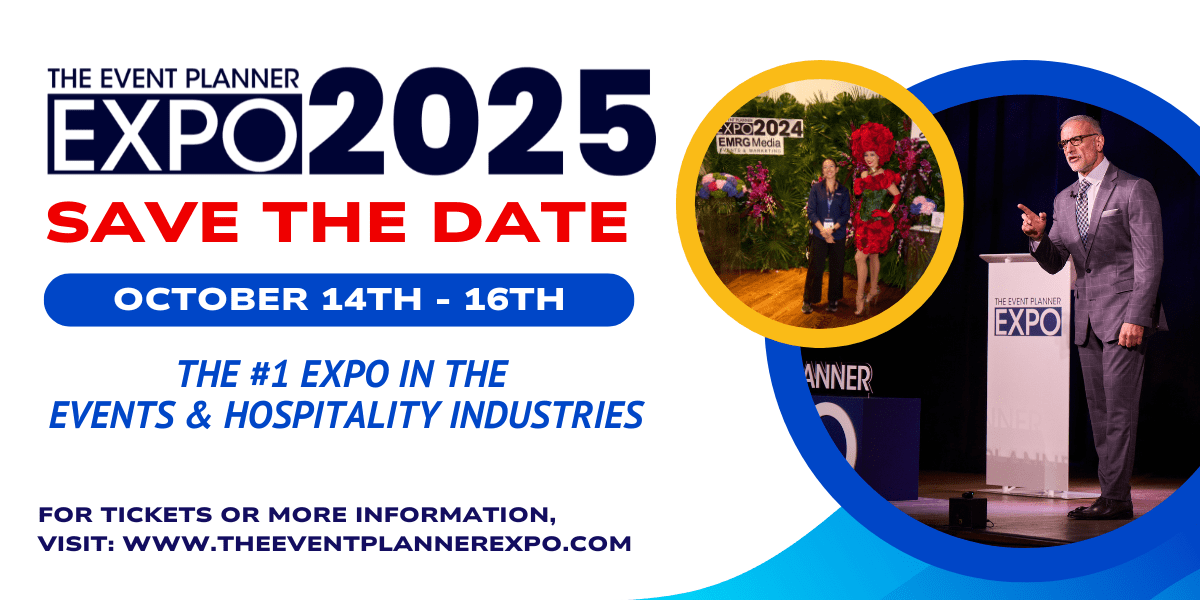How to Balance Bold Décor With Corporate Branding

Corporate events don’t have to feel corporate.
That line alone would make a few executives squirm, but it’s true. In 2025, the most successful business gatherings don’t lean on cookie-cutter backdrops and tired signage. They go bold with décor. They take risks. They create an atmosphere that feels like more than another ballroom meeting.
But here’s the challenge: go too far into the “wow” factor, and suddenly the brand disappears. Play it too safe, and no one remembers the event at all. Finding that balance between bold design and consistent branding is where great planners make their mark.
Why Bold Décor Matters
Corporate guests are still people. They scroll Instagram. They compare experiences. They talk about whether the gala felt “phoned in” or actually memorable. Décor that makes them stop, pull out their phones, or even whisper “this is incredible” is no longer optional.
The days when a logo on a step-and-repeat counted as immersive branding are over. Today’s guests expect experiences that entertain as much as they educate.
The Branding Tightrope
Here’s the tricky part: corporate events still exist to deliver business goals. Sponsors expect visibility. Executives want ROI. Stakeholders want the brand to feel present, not overshadowed.
That means planners walk a tightrope. Lean too heavily into brand logos and you risk a trade-show feel. Lean too heavily into abstract art installations and the CMO starts wondering if guests even remembered whose event it was.
Luxury planners know the secret is integration, not dominance.
The Subtle Integration Play
The strongest events weave branding into the décor in ways that feel seamless. Think custom lighting gels in brand colors that shift throughout the night. Or try a floral design that subtly mirrors the company’s palette. Menus and signage can be styled so elegantly that the branding feels like design, not an ad.
The trick is for guests to walk away associating the entire aesthetic with the company. It’s even better if they can’t point to a single logo. That’s when branding moves from surface to subconscious.
Real World Example: The Corporate Gala Glow-Up
Imagine a financial firm hosting its annual gala. The default approach? Blue uplighting, logo on the step-and-repeat, branded pens on the table. Forgettable.
Now picture the elevated version: lighting that shifts from cool blue to gold as the program moves from presentations to celebration. A bar design with mirrored panels etched with the firm’s logo, catching the light just enough to be noticed without shouting. An interactive installation where guests answer a question about their boldest career move, and those answers feed into a digital display with the firm’s tagline woven in.
Same event. Same brand. But the impact is completely different.
The Role of Storytelling
Décor without story is just decoration. Décor tied to story is branding.
If the event is celebrating innovation, the décor might lean futuristic, such as LED walls, sleek furniture, bold shapes. If the brand’s story is heritage, the design might borrow textures and motifs from its history, as in archival images reinterpreted as art, materials that feel timeless.
Every choice of décor can point back to the narrative. When it does, branding is felt, not forced.
Pitfalls to Avoid
A few common mistakes tend to throw the balance off:
-
- Going heavy on color. Just because the brand palette is blue and gray doesn’t mean the entire room should be washed in blue light. It suffocates rather than enhances.
- Over-logoing. Slapping the mark on every surface feels desperate. Guests stop seeing it altogether.
- Ignoring the guest journey. Décor that only photographs well but doesn’t guide movement or mood creates disconnect.
The fix is editing. Restraint is as important as boldness. Knowing what not to include keeps the balance intact.
Technology as the Bridge
In 2025, tech helps marry bold décor with branding better than ever. Projection mapping allows logos to morph into abstract designs that shift with music. LED panels create branded environments that feel alive rather than static. RFID wristbands trigger personalized brand moments. A good example is a company logo blooming into color as a guest approaches a display.
Touches like these turn branding into an experience rather than a stamp.
Guest-Centric Thinking
Corporate branding isn’t just for the company. It’s for the guests.
Décor that enhances comfort (lounges, wayfinding signage, charging stations) can be branded subtly, creating utility and visibility at once. Guests associate convenience with the brand. They feel cared for, and in turn, they feel warmer toward the host.
That’s where bold design and branding overlap most effectively: when the guest experience drives the choice.
Balancing Risk and Approval
Of course, corporate events come with stakeholders who may fear bold design. The boardroom rarely loves surprises. That’s why great planners present design in terms of business goals:
-
- Bold décor generates social media buzz (share of voice).
- Integrated branding reinforces identity without overkill.
- Guest satisfaction translates into loyalty and ROI.
When you frame bold design as a tool for measurable outcomes, you’ll make it easier to secure approvals and harder for anyone to argue for “safe but forgettable.”
Where This Balance Is Headed
Looking forward, bold corporate décor will lean even more toward immersive. Expect to see brands building entire environments rather than decorating rooms. Branded experiences that merge with entertainment, like pop-up lounges, interactive stages, and multisensory elements, make the brand come alive.
Guests will expect personalization too. Décor and branding that adapt to different attendee segments will feel like magic—and cement loyalty.
The Bottom Line
Bold décor and corporate branding aren’t opposites. They’re partners. The most effective events in NYC right now prove you can wow guests and still deliver a crystal-clear brand message.
The key is integration, story, restraint, and guest focus. Done right, guests leave not just impressed by the design, but convinced of the brand’s identity and vision.
Where to See It in Action
You don’t learn these secrets from a Pinterest scroll. You learn them from being in the same room as the pros who’ve perfected them.
At The Event Planner Expo 2025, luxury designers, corporate strategists, and marketing powerhouses will be unpacking exactly how they balance décor with branding to create events that both stun and sell.
And with Daymond John of Shark Tank headlining the Speaker Series, you’ll hear firsthand how branding at the highest level becomes the backbone of every experience.
Choose your access — VIP, Speaker Series, or the full All Access immersion — and get the strategies that will reshape the way you approach corporate event design. Get your tickets today.
